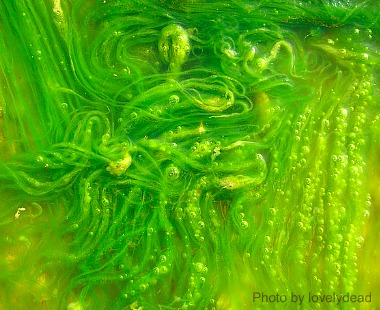Nanocellulose could, in theory, be the miracle material that solves humanity’s every problem. It’s derived from cellulose, the stuff that’s found in plants, but its extra-tiny nano-scale fibers give it superpowers, like incredible strength. Here are just a few of the things you could make with it:
- a boat that can carry 1,000 pounds of cargo
- bulletproof glass
- wound dressings
- electronic wallpaper
Scientists have been trying for decades to figure out how to make nanocellulose efficiently. And now, one team of scientists has announced that they’ve genetically engineered algae to produce it. That means that all that’s required is sunlight, water, and a whole bunch of algae.
This team had been working for years with a bacterium — the same one used in kombucha — that was able to manufacture nanocellulose out of wood pulp. But that was a resource-intensive process, involving large vats of bacteria that needed large amounts of food. Recently, though, they started working with algae, which can produce its own nourishment through photosynthesis. They took genes from the first type of bacterium, threw it into the algae, and — voila! — it produced nanocellulose. The Verge explains:
By genetically engineering vinegar bacterium into blue-green algae, Brown’s lab has effectively created organic factories capable of making nanocellulose on a potentially industrial scale. …
Brown’s lab is still “five to ten years” away from adapting the process to a large scale, though he says the science behind it is sound. All they need now, the professor explains, is broader awareness and momentum.
Also, a whole lot of algae. And the space to grow it in. And to keep people from not freaking out about genetic-freak algae. If it gets too controversial, though, it should be easy enough to protect the algae from protesters: They can, after all, manufacture bulletproof glass from sunlight.



